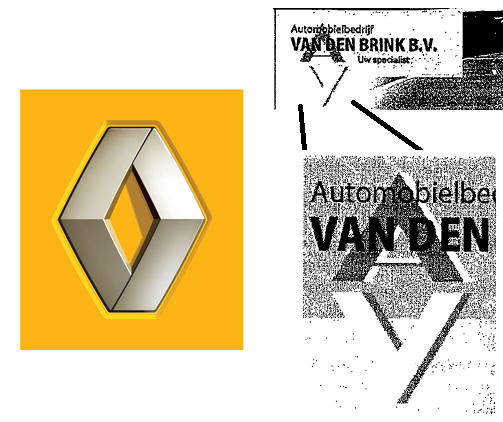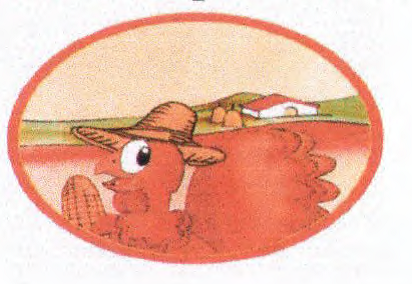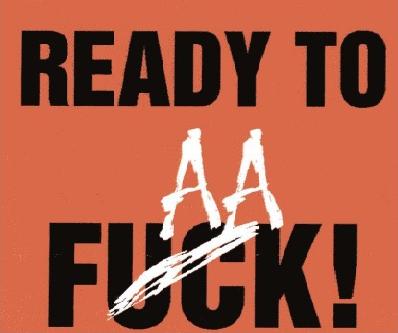Ontbreken van voorvoegsel 'de' levert te weinig onderscheiding op
Rechtbank Rotterdam 17 april 2013, LJN CA2733 (De Scheidingsmakelaar B.V. tegen gedaagde)
Merkenrecht. Franchise. Uitleg vaststellingsovereenkomst in kader van beëindiging franchiseovereenkomst. Verbod toegewezen. De Scheidingsmakelaar vordert succesvol een verbod (direct of indirect) gebruik te maken van de merken, handelsnamen, modellen en know-how van de franchiseformule van De Scheidingsmakelaar, op straffe van verbeurte van een gemaximeerde dwangsom van € 500,00 per overtreding / per dag.
Het gebruik van dat woord vormt geen inbreuk op de handelsnaam en evenmin op het merkenrecht nu sprake is van een generieke term, aldus gedaagde. De Scheidingsmakelaar beroept zich op het beeldmerk. Dat neemt echter niet weg dat gedaagde zich ertoe heeft verbonden om zich te profileren onder een naam die niet slaafs gelijkt op die van de franchisegever.
Ten aanzien van het eerste geval (de website) zou betoogd kunnen worden dat slechts sprake is van een beschrijving van de beroepsgeschiedenis van gedaagde. De wijze waarop dat plaatsvindt, in het bijzonder door De Scheidingsplanner vetgedrukt te gebruiken, kan ertoe leiden dat de naam wordt benadrukt en wordt meegelift op de naam bij het intikken van zoeknamen in zoekmachines op internet.
Met betrekking tot het tweede geval (de advertentie, onduidelijk in of voor welk medium) acht de rechtbank van belang dat in de advertentie meermalen het woord scheidings-makelaar zonder achtervoegsel voorkomt. Het ontbreken van het voorvoegsel “de” levert te weinig onderscheiding op om niet te kunnen oordelen dat geen sprake is van slaafse nabootsing. Ten aanzien van beide situaties overweegt de rechtbank voorts dat als gevolg van de slaafse nabootsing ook gevaar voor verwarring te duchten is. Het gevorderde verbod wordt toegewezen.
Naar het oordeel van de rechtbank heeft gedaagde haar verplichtingen uit hoofde van de vaststellingsovereenkomst geschonden en handelt zij tevens in strijd met artikel 5 HNW.
4.3. [gedaagde] stelt zich verder op het standpunt dat De Scheidingsmakelaar het woord scheidingsmakelaar niet langer kan monopoliseren. Het gebruik van dat woord vormt geen inbreuk op de handelsnaam en evenmin op het merkenrecht nu sprake is van een generieke term. Met het woord wordt ook geen inbreuk gemaakt op het beeldmerk. In verband hiermee vordert [gedaagde] een verklaring voor recht dat het woord door derden, en dus ook door haar, kan worden gebruikt. Het belang bij die verklaring voor recht is gelegen in het voorkomen van procedures voor iedere keer dat zij het woord scheidingsmakelaar gebruikt.
5.2. De hoofdvordering van De Scheidingsmakelaar betreft een vordering tot betaling van verbeurde boetes, waartoe De Scheidingsmakelaar zich beroept op artikel 15 van de franchiseovereenkomst en op de vaststellingsovereenkomst.
De rechtbank constateert dat het boetebeding in de franchiseovereenkomst niet is opgenomen onder het kopje Slot- en Postcontractuele bepalingen. Dat kopje ziet, blijkens de tekst van artikel 16 van de franchiseovereenkomst, op bepalingen die ook na beëindiging van de franchiseovereenkomst van kracht zouden blijven. Deze slot- en postcontractuele bepalingen betreffen - uitsluitend - de artikelen 17 tot en met 23 van de franchise-overeenkomst. Opmerkelijk is dat geen van deze artikelen verwijst naar het in artikel 15 van de franchiseovereenkomst opgenomen boetebeding. Dat neemt niet weg dat de strekking van een boetebeding veelal meebrengt dat zij postcontractuele werking heeft. Dat is echter niet altijd het geval. De rechtbank constateert voorts dat de vaststellingsovereenkomst geen boetebeding bevat.
5.5. Voor het antwoord op de vraag of het gevorderde verbod gebruik te maken van merk, handelsnaam, modellen en knowhow toewijsbaar is, zal de rechtbank eerst beoordelen of sprake is (geweest) van overtreding van de afspraken zoals die zijn neergelegd in de artikelen 2, 3 en 4 van de vaststellingsovereenkomst. Alleen in geval van overtreding bestaat immers belang bij een verbod versterkt met een dwangsom ter voorkoming van herhaling van die overtredingen. Hierbij moet naar het oordeel van de rechtbank een onderscheid worden gemaakt tussen [gedaagde] en de Nederlandse Vereniging van Scheidingsmakelaars, welke laatste partij overigens niet in dit geding in rechte is betrokken.
5.5.1. De rechtbank stelt voorop dat De Scheidingsmakelaar zelf stelt dat zij slechts rechthebbende is op het beeldmerk De ScheidingsMakelaar. Daar leidt de rechtbank uit af dat zij niet de rechthebbende is op de merknaam De Scheidingsmakelaar, welke merknaam blijkbaar niet geclaimd is. Dat neemt niet weg dat [gedaagde] zich ertoe heeft verbonden om zich te profileren onder een naam die niet (cursivering rechtbank) slaafs gelijkt op die van de franchisegever. Het is haar, op grond van de vaststellingsovereenkomst derhalve verboden om zich te profileren onder een naam die daar wel slaafs op lijkt. Dat is een verbod dat qua strekking overeenkomt met het verbod van art 5 Handelsnaamwet (Hnw). Dat artikel verbiedt het voeren van een handelsnaam die slechts in geringe mate afwijkt van de handelsnaam die eerder al rechtmatig door een andere onderneming werd gevoerd, voor zover daardoor verwarring te duchten is.
Naar het oordeel van de rechtbank heeft [gedaagde] in dezen haar verplichtingen uit hoofde van de vaststellingsovereenkomst geschonden en middels de door haar opgerichte B.V. tevens in strijd met artikel 5 HNW gehandeld. Dat heeft zij onder meer gedaan door op de website van het bedrijf waarvan zij oprichter en directeur is (zie productie 8 bij dagvaarding) de woorden De Scheidingsmakelaar vetgedrukt op te nemen en voorts door (haar bedrijf) te (laten) adverteren (zie productie 10 bij dagvaarding) onder de naam Scheidingsmakelaar Scheidingscentrum Nederland en het herhaaldelijk gebruiken van het woord scheidingsmakelaar in advertenties. Ten aanzien van het eerste geval (de website) zou betoogd kunnen worden dat slechts sprake is van een beschrijving van de beroeps-geschiedenis van [gedaagde]. In de kern is dat niet helemaal onjuist, maar de wijze waarop dat plaatsvindt, in het bijzonder door De Scheidingsmakelaar vetgedrukt te gebruiken, brengt de rechtbank tot het oordeel dat een en ander in ieder geval mede is ingegeven om op die naam de nadruk te vestigen. Daarnaast kan alleen al het gebruik van de naam ertoe leiden dat meegelift wordt op de naam (De) Scheidingsmakelaar bij het intikken van zoeknamen in zoekmachines op internet.
Met betrekking tot het tweede geval (de advertentie, onduidelijk in of voor welk medium) acht de rechtbank van belang dat in de advertentie meermalen het woord scheidings-makelaar zonder achtervoegsel voorkomt. Het ontbreken van het voorvoegsel “de” levert te weinig onderscheiding op om niet te kunnen oordelen dat geen sprake is van slaafse nabootsing. Dat aan de kop van de advertentie het achtervoegsel Scheidingscentrum Nederland staat, maakt het oordeel dat ook op dit punt sprake is van slaafse nabootsing niet anders. Daarbij zou ten aanzien van willekeurige derden nog kunnen worden overwogen dat gebruik van het woord scheidingsmakelaar niet zonder meer inbreuk op de rechten van De Scheidingsmakelaar maakt. Gegeven echter de achtergrond van [gedaagde] en de inhoud van de vaststellingsovereenkomst ligt dat voor haar anders. Van haar had verwacht mogen worden dat zij een andere naam althans in ieder geval een ander achtervoegsel achter het woord scheiding had geplaatst.
Ten aanzien van beide situaties overweegt de rechtbank voorts dat als gevolg van de slaafse nabootsing ook gevaar voor verwarring te duchten is. In dit kader is de rechtbank van oordeel dat ten eerste belang moet worden gehecht aan het feit dat [gedaagde] oprichter is van het bedrijf waarvan zij directeur is en dat zij de naam voor dat bedrijf heeft gekozen. Ten tweede is van belang dat zij c.q. Scheidingscentrum Nederland naar aanleiding van de sommatie van De Scheidingsmakelaar het gebruik van het woord scheidingsmakelaar hebben gestaakt. Ten derde zij overwogen dat de strekking van de vaststellingsovereen-komst niet anders kan zijn dan dat iedere profilering, derhalve ook een indirecte, onder een naam die slaafs gelijkt op die van De Scheidingsmakelaar verboden is. Het zou immers anders wel heel erg eenvoudig zijn om de verplichtingen uit de overeenkomst te omzeilen door het optuigen van een vennootschapsrechtelijke constructie. Gelet op alles wat gesteld is en de proceshouding van [gedaagde], die zichzelf ook wel grotendeels met de door haar opgerichte B.V. vereenzelvigt in haar uitlatingen in deze procedure, is de rechtbank van oordeel dat het handelen van die B.V. in deze volledig aan [gedaagde] kan worden toegerekend.
Voor wat betreft de vereniging overweegt de rechtbank dat onvoldoende gebleken is dat de vereniging gebruik maakt van de handelsnaam De Scheidingsmakelaar. Het enkele gebruik van het woord scheidingsmakelaar in de naam van de vereniging is daarvoor naar het oordeel van de rechtbank onvoldoende. Naar komt het volgende bij. De naam van de Nederlandse Vereniging van Scheidingsmakelaars duidt, net zoals zoveel Nederlandse verenigingen van andere beroepen, op een branche- of beroepsorganisatie. Daar komt nog bij dat De Scheidingsmakelaar niet heeft onderbouwd dat het erop zou lijken dat dit een vereniging van franchisenemers van De Scheidingsmakelaar zou zijn, en evenmin dat het gebruik van de naam van de vereniging verwarring in de hand wekt. De rechtbank overweegt op dit punt ten slotte, maar ook ten overvloede, nog dat het nog maar de vraag is of en in hoeverre [gedaagde] en de vereniging vereenzelvigd kunnen worden. Weliswaar heeft [gedaagde] de vereniging opgericht en is zij daarvan thans voorzitter maar blijkens het uittreksel uit het handelsregister is sprake van een driekoppig bestuur en gesteld noch gebleken is dat [gedaagde] het daarin (doorslaggevend) voor het zeggen heeft.
5.5.2. Op het punt van de modellen en de knowhow gaat het, zo begrijpt de rechtbank, om het gebruik van de algemene voorwaarden, het convenant, de opdrachtbevestiging en het ouderschapsplan die één op één zouden zijn overgenomen. De Scheidingsmakelaar heeft haar stellingen op dit punt met producties onderbouwd en [gedaagde] heeft niet betwist dat Scheidingscentrum Nederland de modellen en knowhow gebruikt. [gedaagde] stelt zich weliswaar op het standpunt dat zij hier niet op in hoeft te gaan maar dat had wel van haar verwacht mogen worden. Uit het voorgaande vloeit voort dat [gedaagde] verantwoordelijk kan worden gehouden voor het gebruik van een en ander. Uit de vaststellingsovereenkomst volgt dat dit gebruik verboden is. Gelet op het gebruik heeft De Scheidingsmakelaar dan ook belang bij afdwinging van dat verbod versterkt door een dwangsom.
De rechtbank overweegt verder dat ten aanzien van de vereniging niet gesteld of gebleken is dat deze modellen en/of knowhow gebruikt.
5.5.3. Dit alles betekent dat het gevorderde verbod kan worden toegewezen voor zover het de handelsnaam, de modellen en de knowhow betreft. Van gebruikmaking van het merk, in de vorm van louter het beeldmerk, is onvoldoende gebleken. Dit verbod raakt [gedaagde] direct, maar, zoals uit het vorenstaande blijkt ook indirect. Dat indirecte ziet dan op en moet bij gebreke aan andere stellingen en informatie beperkt blijven tot Scheidingscentrum Nederland, zoals in het dictum zal worden bepaald. De gevorderde dwangsom zal worden beperkt en gemaximeerd als in het dictum bepaald.
 A) Gemeenschapsmerk. Beroep ingesteld door de aanvrager van het woordmerk „
A) Gemeenschapsmerk. Beroep ingesteld door de aanvrager van het woordmerk „ B) Gemeenschapsmerk. Absolute weigeringsgrond, ontbreken van onderscheidend vermogen. Vernietiging van beslissing R 1280/20111 van de eerste kamer van beroep van het Bureau voor harmonisatie binnen de interne markt (BHIM) van 12 januari 2012 houdende verwerping van het beroep tegen de beslissing van de onderzoeker waarbij de inschrijving van het woordmerk „
B) Gemeenschapsmerk. Absolute weigeringsgrond, ontbreken van onderscheidend vermogen. Vernietiging van beslissing R 1280/20111 van de eerste kamer van beroep van het Bureau voor harmonisatie binnen de interne markt (BHIM) van 12 januari 2012 houdende verwerping van het beroep tegen de beslissing van de onderzoeker waarbij de inschrijving van het woordmerk „ D) Gemeenschapsmerk. Absolute weigeringsgrond. Nietigverklaring van beschikking R 1967/2010-2 van de tweede kamer van beroep van het Bureau voor harmonisatie binnen de interne markt (BHIM) van 23 juni 2011, waarbij is verworpen het beroep tegen de beslissing van de onderzoeker houdende weigering van inschrijving van het woordmerk „
D) Gemeenschapsmerk. Absolute weigeringsgrond. Nietigverklaring van beschikking R 1967/2010-2 van de tweede kamer van beroep van het Bureau voor harmonisatie binnen de interne markt (BHIM) van 23 juni 2011, waarbij is verworpen het beroep tegen de beslissing van de onderzoeker houdende weigering van inschrijving van het woordmerk „ E) Gemeenschapsmerk – Beroep ingesteld door de houder van het gemeenschapswoordmerk "
E) Gemeenschapsmerk – Beroep ingesteld door de houder van het gemeenschapswoordmerk " A) Gemeenschapsmerk. Absolute weigeringsgrond. Beroep tot vernietiging van beslissing R 374/20104 van de vierde kamer van beroep van het Bureau voor harmonisatie binnen de interne markt (BHIM) van 18 mei 2011 houdende vernietiging van de beslissing van de nietigheidsafdeling waarbij verzoeksters vordering tot nietigverklaring van het gemeenschapswoordmerk „
A) Gemeenschapsmerk. Absolute weigeringsgrond. Beroep tot vernietiging van beslissing R 374/20104 van de vierde kamer van beroep van het Bureau voor harmonisatie binnen de interne markt (BHIM) van 18 mei 2011 houdende vernietiging van de beslissing van de nietigheidsafdeling waarbij verzoeksters vordering tot nietigverklaring van het gemeenschapswoordmerk „
 B) Gemeenschapsmerk. Beroep ingesteld door de houder van het gemeenschapswoordmerk „BECK’s” voor waren van klasse 32, en strekkende tot vernietiging van beslissing R 2258/20101 van de eerste kamer van beroep van het Bureau voor harmonisatie binnen de interne markt (BHIM) van 19 januari 2012 houdende vernietiging van de beslissing van de oppositieafdeling waarbij de inschrijving van het beeldmerk met de woordelementen „
B) Gemeenschapsmerk. Beroep ingesteld door de houder van het gemeenschapswoordmerk „BECK’s” voor waren van klasse 32, en strekkende tot vernietiging van beslissing R 2258/20101 van de eerste kamer van beroep van het Bureau voor harmonisatie binnen de interne markt (BHIM) van 19 januari 2012 houdende vernietiging van de beslissing van de oppositieafdeling waarbij de inschrijving van het beeldmerk met de woordelementen „ C) Gemeenschapsmerk – Beroep ingesteld door de aanvrager van het woordmerk „
C) Gemeenschapsmerk – Beroep ingesteld door de aanvrager van het woordmerk „
 Een redactionele bijdrage van Daan van Eek,
Een redactionele bijdrage van Daan van Eek,  Uitspraak ingezonden door Laura Broers,
Uitspraak ingezonden door Laura Broers,  Uitspraak ingezonden door Rutger van Rompaey,
Uitspraak ingezonden door Rutger van Rompaey,  Handelsnaamrecht. Merkenrecht. Domeinnaamrecht. Rederij WK is na een aantal overdrachten het rondvaartbedrijf gaan exploiteren onder de handelsnaam 'Rederij Wolfrat'. Wolfrat WK is houdster van twee domeinnamen: redererijwolfrat.nl en wolfratrondvaarten.nl. Wolfrat Boten is houdster van Beneluxwoordmerk
Handelsnaamrecht. Merkenrecht. Domeinnaamrecht. Rederij WK is na een aantal overdrachten het rondvaartbedrijf gaan exploiteren onder de handelsnaam 'Rederij Wolfrat'. Wolfrat WK is houdster van twee domeinnamen: redererijwolfrat.nl en wolfratrondvaarten.nl. Wolfrat Boten is houdster van Beneluxwoordmerk  A) Gemeenschapsmerk – Beroep door de aanvrager van het beeldmerk met de woordelementen „
A) Gemeenschapsmerk – Beroep door de aanvrager van het beeldmerk met de woordelementen „ B) Gemeenschapsmerk – Beroep ingesteld door de houder van een nationaal beeldmerk dat een kip weergeeft voor waren van de klassen 29 en 31, en strekkende tot vernietiging van beslissing
B) Gemeenschapsmerk – Beroep ingesteld door de houder van een nationaal beeldmerk dat een kip weergeeft voor waren van de klassen 29 en 31, en strekkende tot vernietiging van beslissing  Vervolg op
Vervolg op  Een redactionele bijdrage van Theo-Willem van Leeuwen,
Een redactionele bijdrage van Theo-Willem van Leeuwen, 
























































































